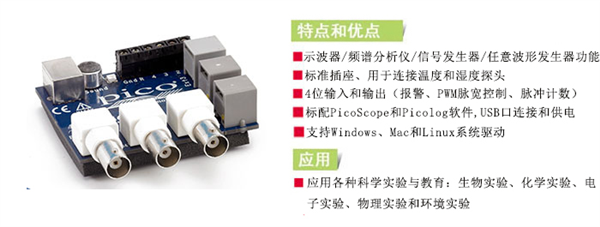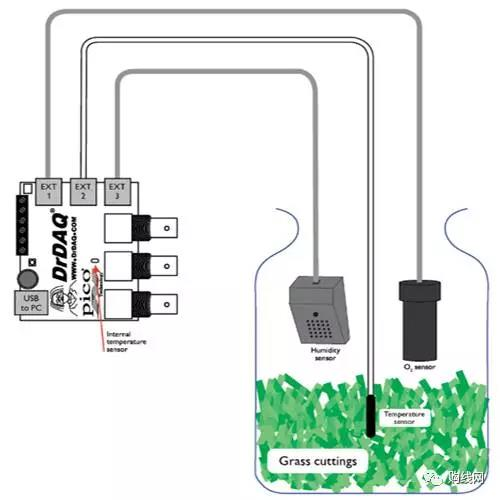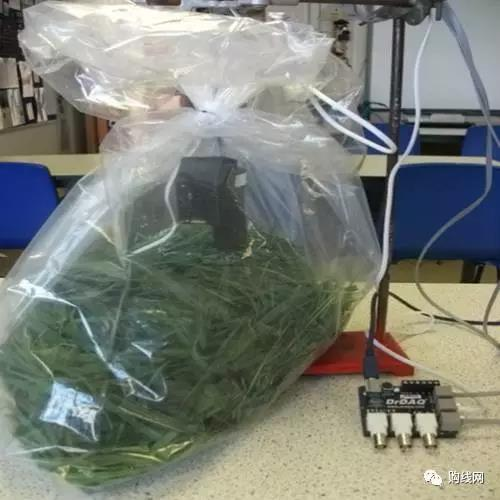Introduction: After the grass has withered, it will become the nutrients needed by the plant due to the decomposition of microorganisms - inorganic salts. The vegetation is mainly composed of water, lignin and sugar. The latter two compounds contain carbon, hydrogen and oxygen. When they are broken down, they release carbon dioxide and water. Microbial decomposition requires a certain temperature and oxygen. A typical reaction is the decomposition of glucose: (aerobic) C6H12O6 + 6O2 → 6CO2 + 6H2O + energy, (no oxygen) C6H12O6 → 2C2H5OH = 2CO2 energy, these two chemical reactions, showing that the microorganisms decompose the vegetation and produce energy. Through this experiment, we can understand the dynamic changes of oxygen, carbon dioxide and energy in the process of plant decomposition, and analyze the conditions required for the fastest decomposition, and then apply it to the best structural construction in the compost.
Equipment required: DrDAQ educational data logger; temperature sensor; oxygen sensor (unnecessary); humidity sensor (optional); 500 g - 5 kg fresh grass slice; thick polyethylene bag; insulated bag (optional); Elastic band.

Experimental setup: The device is set up as shown below. The oxygen and temperature (and humidity) sensors are connected to the DrDAQ data logger and transferred to the PC. Put fresh grass clippings into the bag. The bag can be placed in an insulated bag to prevent heat loss. The temperature sensor is inserted in the middle of the grass clippings. The oxygen sensor (and humidity sensor) is suspended above the grass clippings and the bag is bundled around the sensor cable to ensure that the oxygen sensor does not fall into the grass clippings. Brackets and clamps can be used to support the sensor cable.

The physical map is as follows

The software is set to one sample record per minute, and up to 600 samples can be recorded (ie, the data is 10 hours). Temperature sensors on the DrDAQ can be used to record room temperature so any large background temperature changes that may affect the experiment can be examined. The figure is set to show oxygen content and temperature. The spreadsheet is set to display oxygen content, temperature and room temperature. If the spreadsheet is set to read every 5 or 10 times, you can easily view the spreadsheet (click on "Options" in the side menu of the spreadsheet display). Note that due to the heat emitted by the DrDAQ, the temperature sensor on the DrDAQ shows a slightly higher reading than the external temperature sensor before the start of the experiment.
Experiment: After setting up the experiment, record the sensor for about 10 hours. The temperature should start to rise within five minutes or ten minutes, so the experiment can be set to be shorter (or longer) if needed.
Discussion of problems and results
1. What happens if grass (and other plants) are not broken down?
2. How does microbes cause grass to rot?
3. Which two groups of microorganisms are mainly responsible for decay?
4. What are the three main factors required for microbial rapid decay?
5. Are the microorganisms absorbing oxygen and returning it to the atmosphere?
6. What could be the reason for the drop in humidity level, then rise or rise?
7. What happens when the oxygen level drops to a low level?
Research extension: Further research may involve temperature drops or changes in moisture content, adding oxygen to the experiment. The grass clippings were stirred by hand, oxygen was introduced by experiment, and the temperature was observed to rise again. Alternatively, the grass clippings are wetted with water or dried in a low heat in an oven and the bag is sealed to understand the difference in humidity levels. Try the experiments listed here, then repeat the air with a bag to see if the difference in oxygen at the top, or put the tube into the center of the pile to introduce more air.
Velvet Wine Bags,Velvet Gift Pouch,Velvet Favor Bags,Velvet Wine Bottle Bags
Suzhou Yuli Industrial Co.,Ltd , https://www.packageyuli.com
